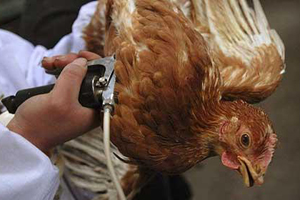Blog: One health – are we getting any closer?

The UK have produced their joint ‘One Health Report’ on human and animal antibiotic use sales and resistance, for 2013 – are we getting any closer to understanding the link between the two factions/sides?
In spite of making great progress to comparing data regarding disease incidence and comparing antibiotic resistance in man and different animal species, the methods for determining resistance are different and therefore, close comparison is not always possible. Human medicine uses clinical breakpoints (CBPs), whereas veterinary medicine is using ‘wild type’ or epidemiological cut-off values (ECOVs) which may be quite different (usually higher resistance). So saying, in the joint PHE/VMD report they have revised the animal resistance data using the human CBPs.
Antimicrobial use
Firstly, human use of antibiotics amounted to 531 tonnes in the UK. Originally, private prescriptions were not included but estimates bring the figure closer to a total of 590 tonnes of active antimicrobials (58% of use). On the animal side from sales of antibiotics by the pharmaceutical companies it was calculated at 419 tonnes of active (42% of use). Interestingly, it puts human use at 135mg/kg of human biomass and 55.6mg/kg of food-producing animal biomass, more than twice animal use, a figure I have not seen before. In UK pigs, we estimated we were using about 164mg/kg bodyweight, which is higher than human medicine but not that much higher, hence my surprise.
Antimicrobial resistance
The report mainly looked at antimicrobial resistance in Escherichia coli, Campylobacter and Salmonella. The last two bugs are of major significance as they are considered zoonoses or diseases transmitted from animals to man. The possibility of transfer of ESBL (extended spectrum beta-lactamase resistance, due to 3rd and 4th generation cephalosporins) resistance via E. coli potentially from animals to man is remarkably low in Sweden at 0.00022% of the population/year or 0.22 people/100,000 population in comparison with an incidence of clinical blood infection of 85 people/100,000 population.
Attribution rate of Campylobacter and antimicrobial resistance from animals to man
In this weblog, I propose to look at the attribution rate of Campylobacter and antimicrobial resistance from animals to man.
Campylobacter jejuni and C. coli are the two major Campylobacter infections in man, with C. jejuni being the most dominant. In the UK report, 85% of human cases were C. jejuni and only 11% were C. coli, others comprised 4%. In a report (Mughini Gras and others, 2012) from the Netherlands, described the attribution of sources of infection, using advanced genetic techniques (multi-locus sequence typing – MLST). They could demonstrate that chicken meat accounted for 66.2% of infections, whereas pigs were only responsible in 0.3% of cases (see Table 1).
Possibly surprisingly, cattle accounted for 20.7% of cases and the environment, which included beach sand and wild birds was 10.1%.
From the UK report we can look at the incidence of antimicrobial resistance by species using CBP data (see Table 2).
In 2013, there were 66,575 cases of human Campylobacter infection reported in a population of 64.1million people or 104 cases/100,000 population. Using the attribution figures from the Netherlands and the UK incidence and resistance data we can make the following attribution of resistance calculations.
From these calculations, it can be seen that the attribution of resistance transmission by pigs via Campylobacter is remarkably low for both macrolide and fluoroquinolone families with resistance at 0.087 and 0.04 people/100,000 population, respectively. This is mainly due to the low transmission of the infection from pig carcasses to man. In comparison, chickens are the highest transmitters of Campylobacter infections to man, with high carcass contamination but regarding macrolide resistance it is very low (approximately 1%) and therefore the transmission rate is also low at 0.687 people/100,000 population. This confirms why the EU thinks macrolide resistance is of less significance than the WHO. Regarding fluoroquinolone resistance transmission, the rate is higher (35%) in chickens and therefore due to the high attribution rate (66.2%) the potential number of people affected is high at 24.05/100,000 population.
As more data is developed, it is hoped that better attribution of cause and affect can take place, with focus on the really important issues. This approach is also helpful for identifying future hazards and HACCP implementation to reduce the risks, e.g. reduce chicken carcass contamination, a major problem for EFSA. Additionally, EMA are consulting on Guidelines to assess better the benefit/risk of using antimicrobials in animals and as well as indirect transmission of resistance from animals to man via food, they are proposing examining the risk from direct exposure from animals to farm workers. This resistance work area appears to have a long way to run still, as does the ‘one health’ approach.
Join 31,000+ subscribers
Subscribe to our newsletter to stay updated about all the need-to-know content in the poultry sector, three times a week. Beheer
Beheer








 WP Admin
WP Admin  Bewerk bericht
Bewerk bericht